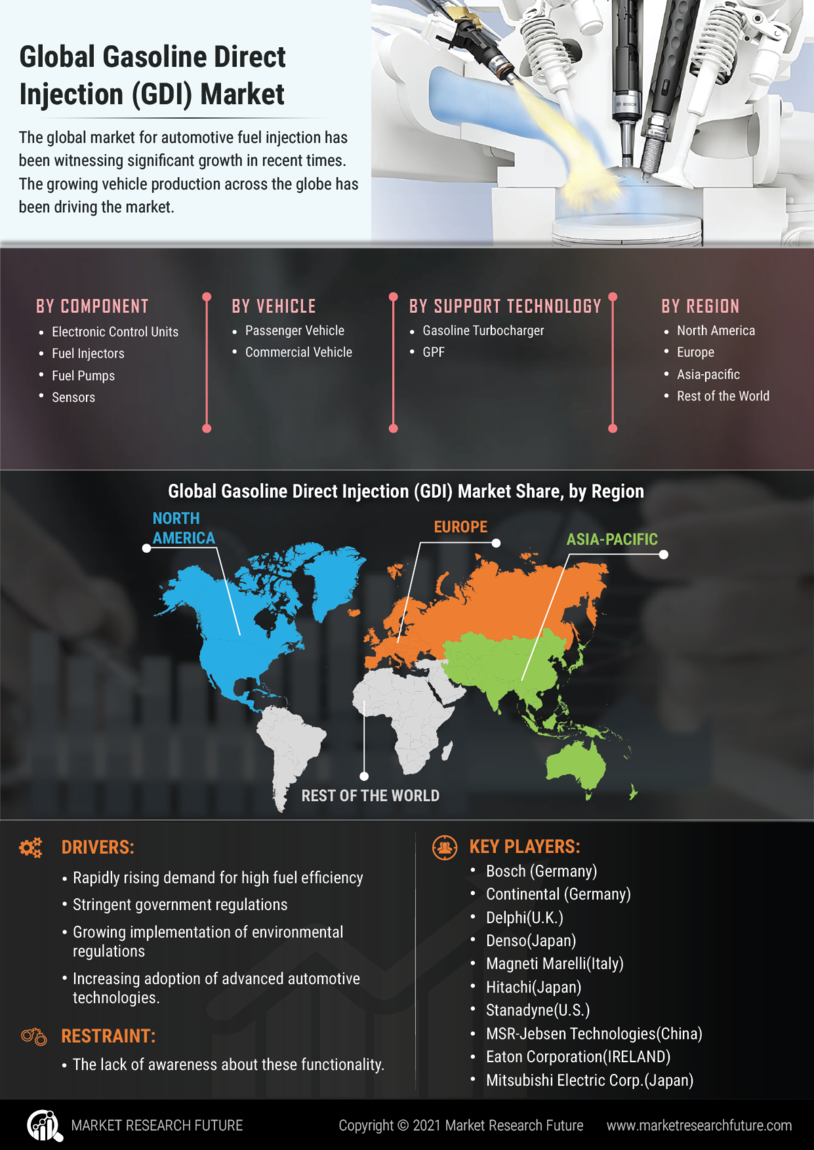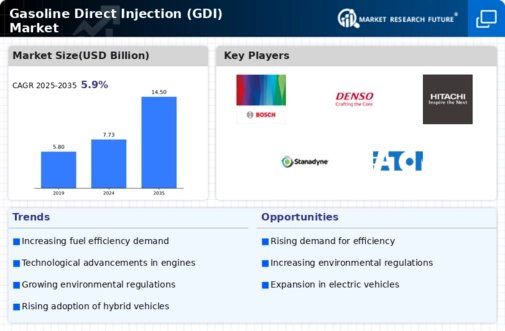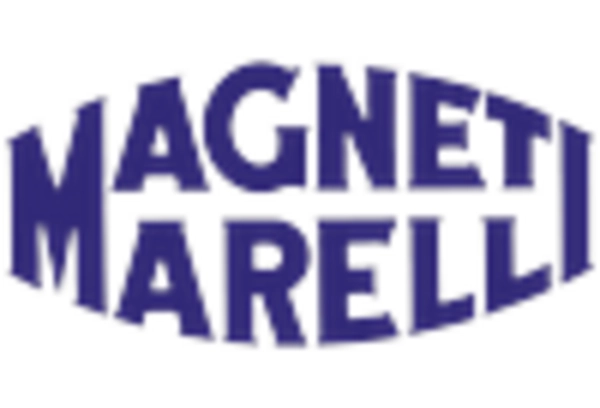The Gasoline Direct Injection Market is currently characterized by a dynamic competitive landscape, driven by technological advancements and increasing demand for fuel-efficient vehicles. Key players such as Bosch (Germany), Denso (Japan), and Delphi Technologies (United Kingdom) are at the forefront, each adopting distinct strategies to enhance their market positioning.
Bosch (Germany) emphasizes innovation in fuel injection systems, focusing on integrating advanced technologies to improve engine performance and reduce emissions. Denso (Japan) is strategically investing in partnerships with automotive manufacturers to expand its market reach, while Delphi Technologies (United Kingdom) is concentrating on digital transformation initiatives to streamline operations and enhance product offerings. Collectively, these strategies contribute to a competitive environment that is increasingly focused on technological differentiation and sustainability.
In terms of business tactics, companies are localizing manufacturing to reduce costs and optimize supply chains, which is particularly relevant in the context of fluctuating global trade dynamics. The market structure appears moderately fragmented, with several key players exerting influence over various segments. This fragmentation allows for niche players to emerge, yet the collective strength of major companies like Bosch (Germany) and Denso (Japan) shapes the overall competitive dynamics.
In November 2025, Bosch (Germany) announced the launch of a new line of gasoline direct injection systems designed to enhance fuel efficiency by up to 15%. This strategic move underscores Bosch's commitment to innovation and positions the company to capitalize on the growing demand for environmentally friendly automotive technologies. The introduction of this product line is likely to strengthen Bosch's competitive edge in the market, as it aligns with global trends towards sustainability.
In October 2025, Denso (Japan) entered into a strategic partnership with a leading electric vehicle manufacturer to develop hybrid gasoline direct injection systems. This collaboration is significant as it not only expands Denso's technological capabilities but also positions the company to tap into the burgeoning hybrid vehicle market. The partnership reflects a broader trend of convergence between traditional internal combustion engine technologies and electric vehicle innovations, suggesting a shift in consumer preferences.
In September 2025, Delphi Technologies (United Kingdom) unveiled a new digital platform aimed at optimizing the performance of gasoline direct injection systems through real-time data analytics. This initiative is indicative of the increasing importance of digitalization in the automotive sector, as it allows for enhanced monitoring and predictive maintenance of fuel injection systems. By leveraging data analytics, Delphi Technologies is likely to improve customer satisfaction and operational efficiency, further solidifying its market position.
As of December 2025, the competitive trends in the GDI Market are increasingly defined by digitalization, sustainability, and the integration of artificial intelligence. Strategic alliances are becoming more prevalent, as companies recognize the need to collaborate in order to innovate and meet evolving consumer demands. Looking ahead, competitive differentiation is expected to shift from price-based competition to a focus on technological innovation, reliability in supply chains, and sustainable practices. This evolution suggests that companies that prioritize R&D and strategic partnerships will likely emerge as leaders in the market.
In October 2025, GB Remanufacturing expanded its gasoline direct fuel injection program, adding new remanufactured components for modern engines. The expansion enhances coverage for late-model vehicles and supports aftermarket availability. It reflects growing demand for high-quality, cost-effective replacement fuel systems.
Recently, Hyundai began development of a new 1.2-litre turbocharged petrol engine, designed to deliver stronger performance and better fuel efficiency in compact cars. The engine is expected to support upcoming models and expand Hyundai’s modern turbo powertrain lineup.

















Leave a Comment